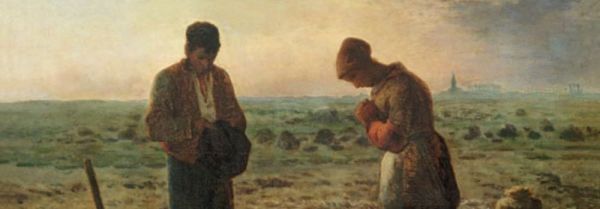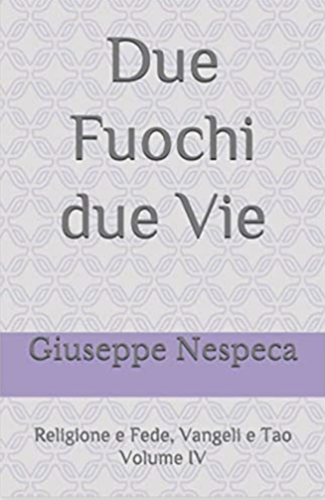That which gives value to every moment
(Jn 6:35-40)
Jesus' words imply the clear dissimilarity between ordinary food and Bread that does not perish.
The distinction is taken from Deut 8:3 - with reference to the Manna-Word of the Lord (wisdom food that liberates and imparts life).
Wis 16:20-21.26 recognises the manna of the desert to be food prepared by angels, but what really keeps one alive is the Word.
Those heavenly fruits, though delicious and able to satisfy every taste, do not satiate - they do not nourish completely.
Cultural paradigms that identified manna with wisdom also enter into the symbolic language used by Christ.
He thus self-evangelises in his discourse on the Bread of Life.
Coming to the Lord is not within our reach. Doing the works of the law, perhaps yes - with effort - but doing the Work of God is not unnatural.
It does not depend on a thought, a choice, or a disciplinary practice.
In short, the Subject of the walk in the Spirit is God Himself, working in us.
Human action is at every juncture a response to his own self-revelation and action [cosmic and in one's soul; convergent or not].
The Coming from Above is critical: it provokes the relationship of Faith. Personal relationship, which is not mere assent and fulfilment, but reading and vision.
Forward action and discovery of resurrection - in particular, of shadow sides that become resources.
So Faith-love expands life, because it has its input from divine generosity, from Grace.
It thus becomes decision, occupation, responsibility; inescapable and diriment duty - despite this, personal.
Christ is Food that must be eaten, minced, by means of Faith.
The evocation becomes Eucharistic, realisation of the "Life of the Eternal" (v.40 Greek text) even in a manner different from the manner sought; here and now.
By dying, without any delay Jesus delivers the Spirit (Jn 19:30) that suddenly arouses the sacramental experience (Jn 19:34).
The Life of the Eternal is not a pious hope in the afterlife: the term designates God's own intimate life, which unfolds and bursts into history [sometimes unceremoniously] in a multifaceted manner.
Energy, Food, New Lucidity: it reaches women and men who see and believe in the Son.
It is a Faith-Vision that reads meaning, and enables direct appropriation: it overcomes insurmountable obstacles.
A Faith-Gesture that gushes forth; a Faith-Action that becomes a ferment of expansion, because it has already aroused acumen, global attention, and intimate consensus.
It sharpens and expands the transformative resources of souls and events themselves.
It bestows overall generative abilities - outward and inward, indestructible; which lose nothing [no longer doomed to death: v.39].
The obtuse gaze around the first fraternities already sealed the Mystery.
But contrary to the First Testament (Ex 33:22-23), by Faith one now sees God and lives, no longer afraid (Ex 3:6).
He who "sees" the Son "has" the same Life as the Eternal (v.40).
The Vision of Faith, the Vision of the Son, the Vision of the glorious outcome of the one who was rejected by the religious authorities and considered accursed by God, makes one become One with Him.
It is actual Resurrection, even in the swift and crushing experience of dispersive existence.
The Image considered impossible and that could not be held, gives way to a process of interpretation, action, rearrangement, which attracts future.
It gives way to the completeness of God's humanising and different world.
The shift of gaze breaks the web of appearances, of banal, inherited or à la page convictions.
In short: perceiving Him becomes the engine of salvation, the foundation that surpasses the pre-human.
Perceiving it becomes Encounter; in its own and perennial dimension. Principle of blissful eternity.
At the end of the first century, the churches feel the risk of collapse.
The progressive split from pagan religion in general, and Judaizing devotion in particular, entailed a wide-ranging debate with customary and internal, even liturgical implications.
The battle with Pharisaical purism sparked all kinds of controversies, including whether or not foreigners should be segregated.
Differences of opinion even arose over the canon of Scripture itself (for Christians, already in Hellenistic Greek).
According to believers in Jesus, the Source of full and indestructible life ["Life of the Eternal": v.40 Greek text] is not material bread.
Already on this earth the all-embracing Food does not lie in any trivial certainty.
One must rather "see the Son" (v.40).
It means to grasp in the Master a story that does not end in failure, because despite the rejection of the leaders, the outcome of his-our story is the divine condition. Indestructible glory.
And "Believing in Him" (v.40) does not depend on cultural extraction or social position, but on an unrepeatable elaboration.To see and have Faith is to trust in the luminous [seemingly absurd] Vision that is communicated in the most intimate fibres and from the very first 'Birth'. Certain of the full attunement and realisation in that super-eminent Figure.
We do not adhere to enthusiasm or initiatives [the 'Church of events', as Pope Francis says].
The life of the Eternal in us begins in the eye of the soul; echoing the primordial Dream.
It enters into the grasping of the Father's trajectory. He wants for his least ones a fullness of imprint and character, without conformity.
Only thanks to the Gift in which we recognise ourselves from our roots and in essence, do we perceive joyful consonances that identify desires, words, actions and the kind of path of the Risen One Himself, pulsating within us.
The Person of Christ is the only Food without homologation.
Sustained by the Bread-Person we can avoid both the search for false security and the craving for support. E.g., acquaintances, financial backers, conspicuous institutions that guarantee privileges; and so on.
Preferring Broken Bread.
The food of the earth preserves physical life, but it cannot revive us through unique personal Genesis, nor open a way through death.
This gives value to each moment.
To internalise and live the message:
What does it mean for you to see the Son and believe in Him?
Do not project onto God the image of the servant-master relationship
The multiplication of the loaves and fishes is a sign of the great gift that the Father has given to humanity and that is Jesus himself!
He, the true "bread of life" (v. 35), wants to satiate not only bodies but also souls, giving the spiritual food that can satisfy a deep hunger. That is why he invites the crowd to procure not the food that does not last, but the food that remains for eternal life (cf. v. 27). This is food that Jesus gives us every day: his Word, his Body, his Blood. The crowd listens to the Lord's invitation, but does not understand its meaning - as happens so often to us too - and asks him: "What must we do to do the works of God?" (v. 28). Jesus' listeners think that He is asking them to observe the precepts in order to obtain other miracles such as that of the multiplication of the loaves. It is a common temptation, this, to reduce religion only to the practice of laws, projecting onto our relationship with God the image of the relationship between servants and their master: servants must perform the tasks the master has assigned, in order to have his benevolence. This we all know. So the crowd wants to know from Jesus what actions they must do to please God. But Jesus gives an unexpected answer: "This is the work of God: that you believe in him whom he has sent" (v. 29). These words are also addressed to us today: God's work is not so much in 'doing' things, but in 'believing' in Him whom He has sent. This means that faith in Jesus enables us to do the works of God. If we allow ourselves to be involved in this relationship of love and trust with Jesus, we will be able to do good works that smell of the Gospel, for the good and the needs of our brothers and sisters.
The Lord invites us not to forget that if it is necessary to worry about bread, it is even more important to cultivate a relationship with Him, to strengthen our faith in Him who is the "bread of life", who came to satisfy our hunger for truth, our hunger for justice, our hunger for love.
(Pope Francis, Angelus 5 August 2018)












